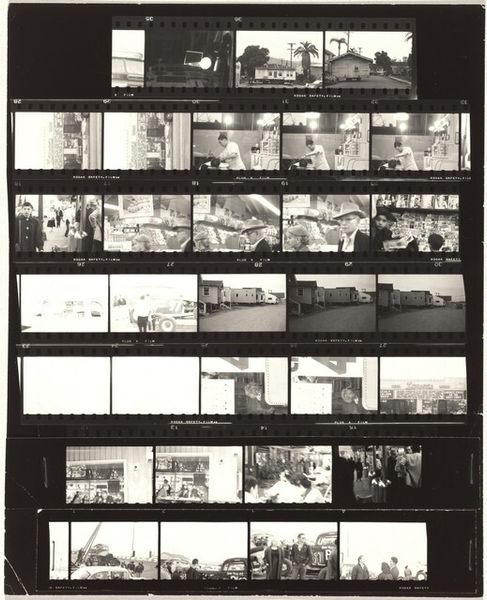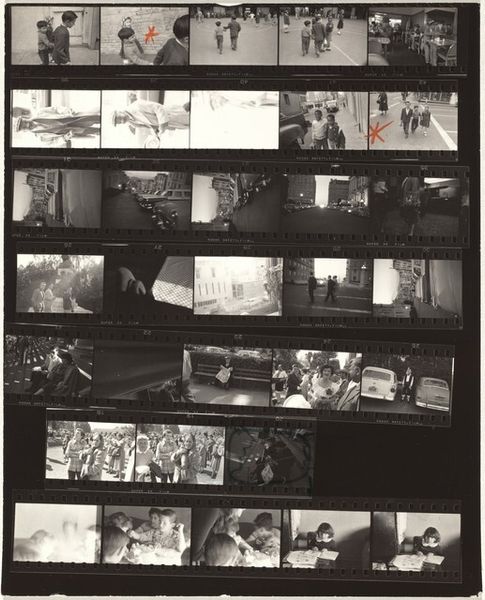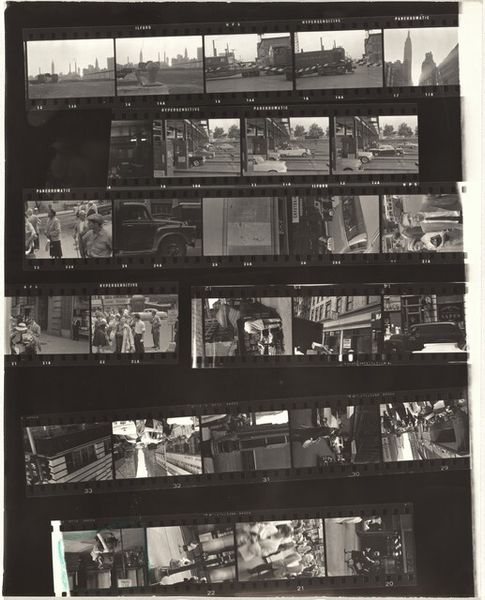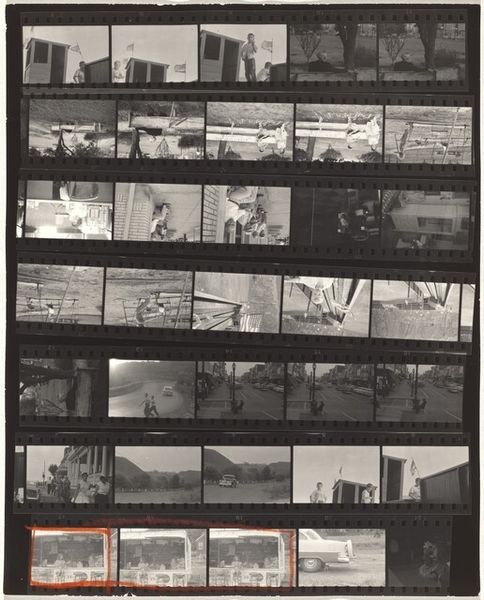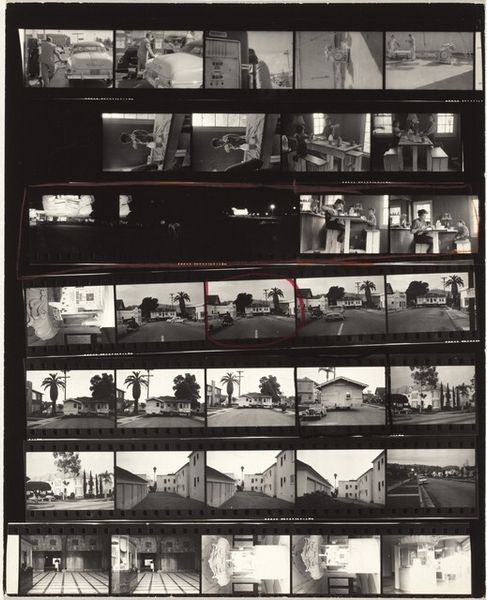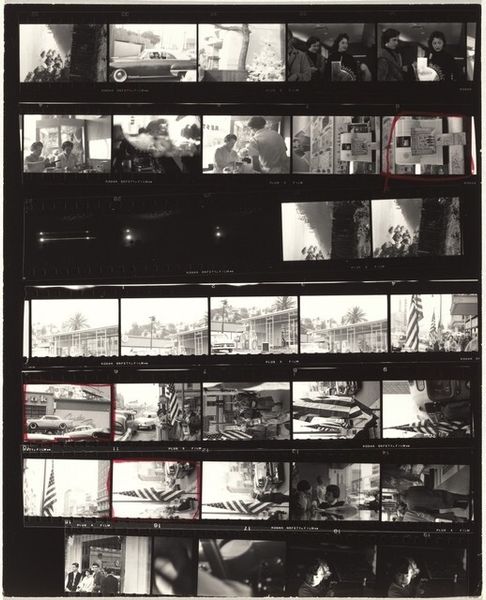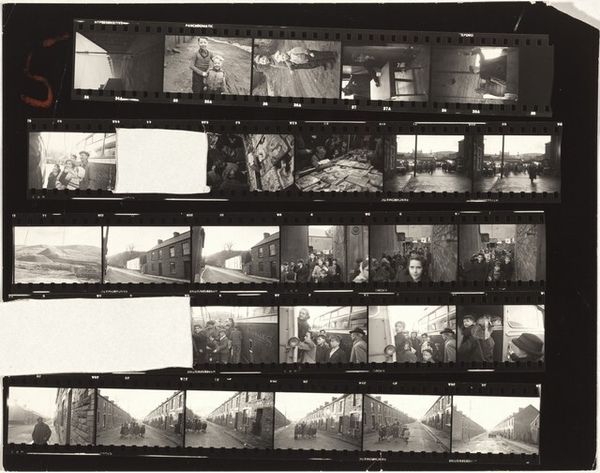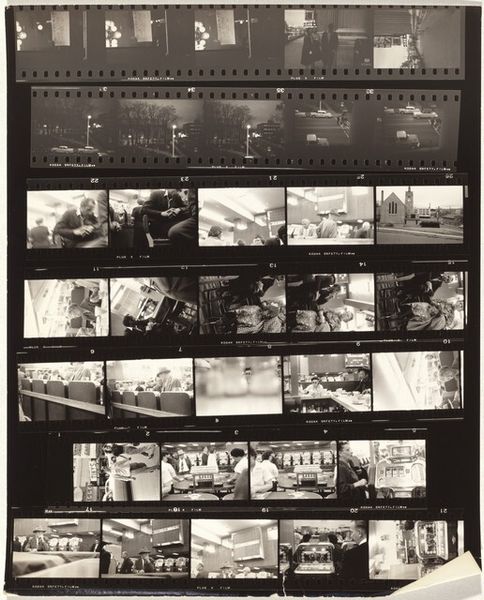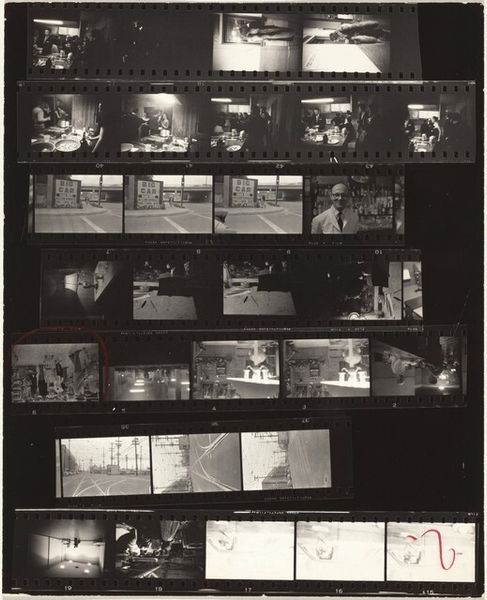
contact-print, photography
#
portrait
#
contact-print
#
archive photography
#
street-photography
#
photography
#
historical photography
#
cityscape
#
modernism
#
realism
Dimensions: sheet: 25.2 x 20 cm (9 15/16 x 7 7/8 in.)
Copyright: National Gallery of Art: CC0 1.0
Editor: This is Robert Frank’s "Women for 'Vogue'--rejects 25," a contact print made between 1952 and 1953. It’s essentially a sheet of rejected photographs. I'm immediately drawn to how raw and unpolished it feels, especially compared to the glossy images typically associated with Vogue. How do you interpret Frank's decision to present these outtakes? Curator: This work offers a fascinating commentary on the constructed nature of beauty and the role of magazines like Vogue in shaping societal ideals. Frank, known for his gritty realism, seems to be subverting the glamour and perfection often portrayed in fashion publications. What do you think he's saying about the realities behind those polished images? Editor: Perhaps he's hinting at the labor, the editing, the choices that go into creating that “perfect” image. The "rejects" label becomes significant. It’s as if he's pulling back the curtain on the constructed world of fashion. Curator: Exactly. Consider the context: post-war America, the rise of consumer culture, and the powerful influence of magazines. Frank is challenging this idealized representation of women, revealing the process of selection and exclusion inherent in the fashion industry. He also critiques the institutional power of magazines and their influence on cultural values, don’t you agree? Editor: Yes, absolutely. By showing us what didn’t make the cut, he forces us to question what standards are being upheld and who gets to decide what is "worthy" of representation. Curator: Furthermore, his aesthetic choice to present the contact sheet itself adds another layer of meaning. It is not the final image, but the artifact that proves the editing happened. So it asks, how much of what we think we are looking at is raw data, versus curated presentation? Editor: This has made me realize there’s so much more than initially meets the eye in what seems like a simple collection of outtakes! Curator: Precisely, understanding the socio-political context opens up so many ways to consider his work and challenge assumptions.
Comments
No comments
Be the first to comment and join the conversation on the ultimate creative platform.
